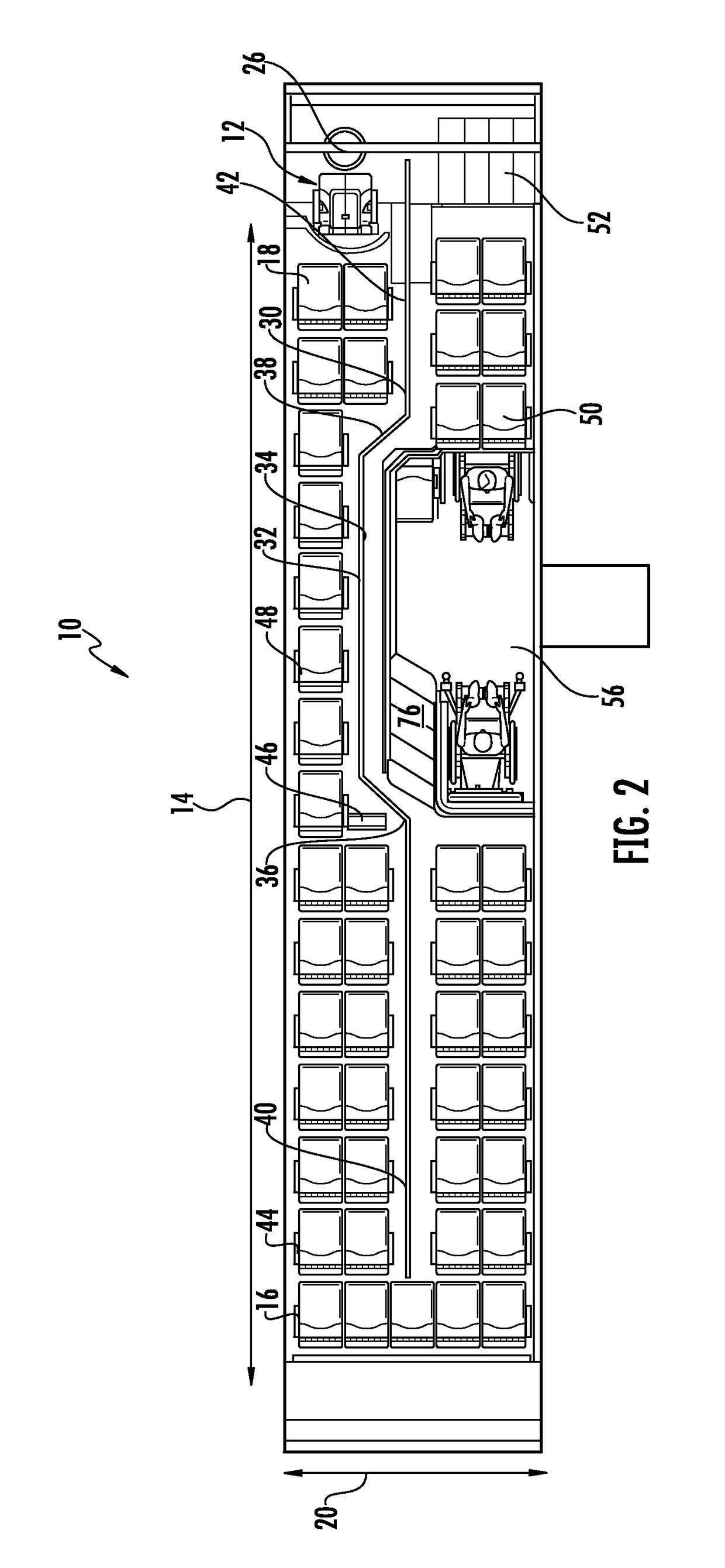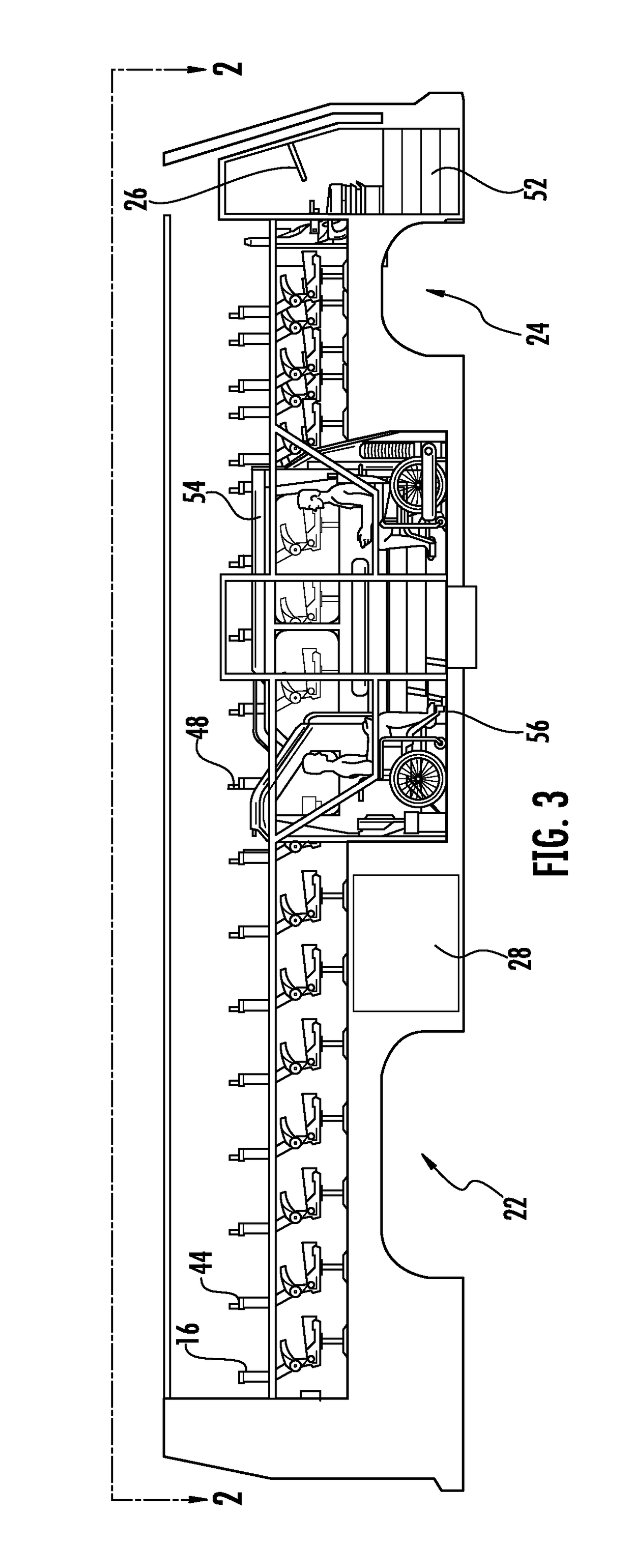Motor coaches for the mobility impaired
a technology for mobility impairment and motor coaches, applied in the field of motor coaches, can solve problems such as time delay, and achieve the effects of reducing the attention of mobility impaired passengers from other passengers, and reducing loading and unloading times
- Summary
- Abstract
- Description
- Claims
- Application Information
AI Technical Summary
Benefits of technology
Problems solved by technology
Method used
Image
Examples
Embodiment Construction
[0026]Referring to FIG. 1, FIG. 1 is as stated briefly above, a perspective view of relevant portions of the preferred motor coach 10 of the invention. A driver area 12 of the coach 10 is to the right in this orientation of the coach 10 in FIG. 1. A passenger area extends along the longitudinal forward-to-backward direction of the coach behind the driver area 12, the direction and longitudinal extent of the area being represented by double-ended arrow 14. Thus, passenger seats extend from the front row of coach passenger seats 18 to the rear row of coach passenger seats 16. The seats exist in distinct groups of seats, to be explained in greater detail below. The seats also extend across the transverse side-to-side direction of the coach, with direction and extent represented by arrow 20. The rear of the coach is to the left in this orientation.
[0027]Wheel well spaces 22, 24 are along the lower portions of the coach body. The roof of the coach 10 is removed to show interior detail. A...
PUM
 Login to View More
Login to View More Abstract
Description
Claims
Application Information
 Login to View More
Login to View More - R&D
- Intellectual Property
- Life Sciences
- Materials
- Tech Scout
- Unparalleled Data Quality
- Higher Quality Content
- 60% Fewer Hallucinations
Browse by: Latest US Patents, China's latest patents, Technical Efficacy Thesaurus, Application Domain, Technology Topic, Popular Technical Reports.
© 2025 PatSnap. All rights reserved.Legal|Privacy policy|Modern Slavery Act Transparency Statement|Sitemap|About US| Contact US: help@patsnap.com



